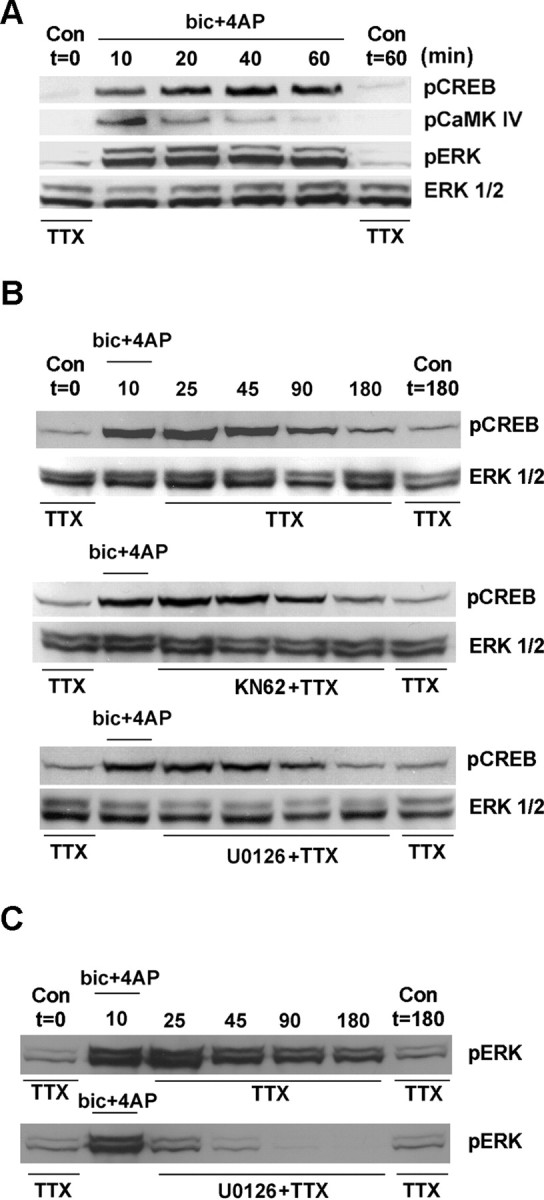Figure 6.

The MAPK pathway and CaMKIV do not regulate the duration of CREB phosphorylation. A, The duration of CREB, CaMKIV, and ERK phosphorylation was monitored during a period of persistent NMDA receptor-mediated synaptic activity. Cultures were lysed 10-60 min after the onset of synaptic stimulation [bicuculline (bic) plus 4-AP containing nimodipine and CNQX]. Control cultures (no stimulation) were collected at the beginning and the end of the stimulus period. Robust increases in both CREB and ERK phosphorylation were observed for the duration of the stimulation. However, CaMKIV phosphorylation was transient, showing maximal activation at the 10 min time point. B, To examine the contribution of CaMK and MAPK signaling to the duration of CREB phosphorylation, we transferred cells to media containing KN62 (10 μm) or U0126 (10 μm) immediately after synaptic stimulation. Samples were collected at the prestimulus and poststimulus time points indicated. Relative to the control synaptic activity condition (no inhibitor), disruption of CaMK signaling and MAPK signaling did not alter the duration of CREB phosphorylation. C, As a control experiment, the duration of ERK phosphorylation was examined. Synaptic activity triggered sustained ERK phosphorylation; the administration of U0126 after stimulation dramatically attenuated ERK activation. Con, Control.
